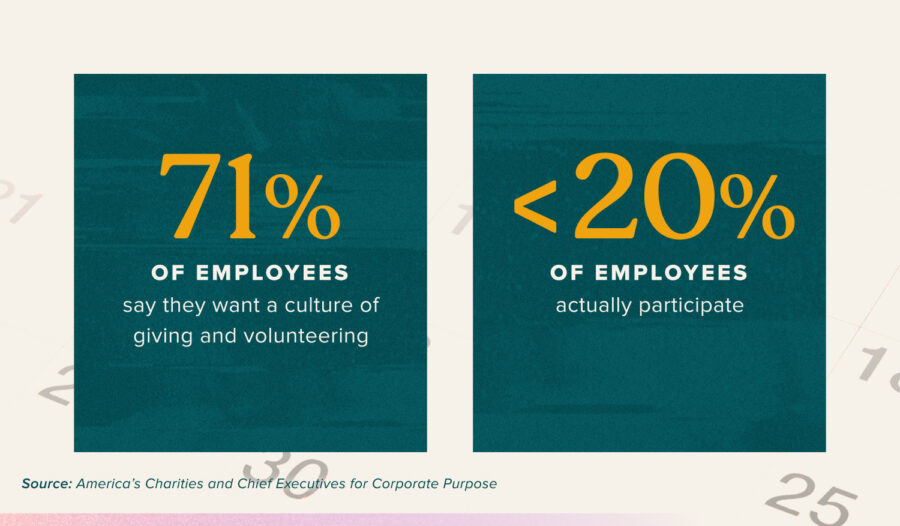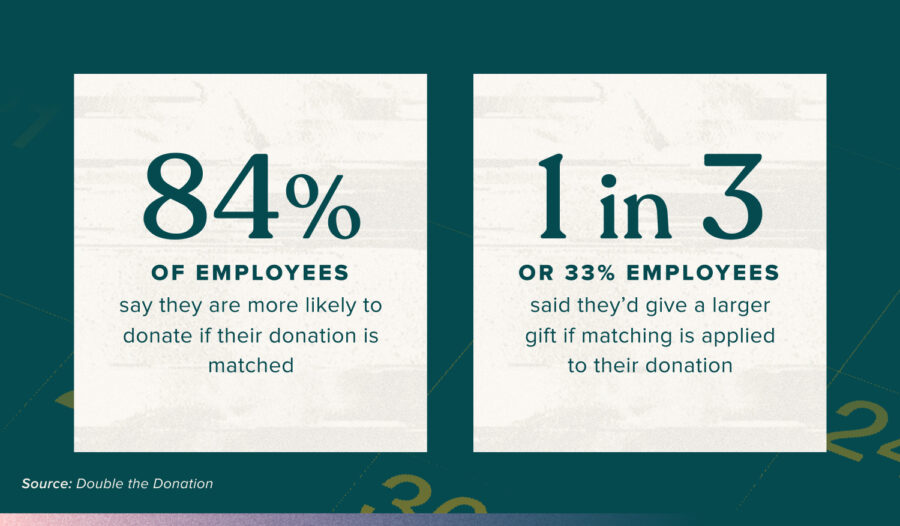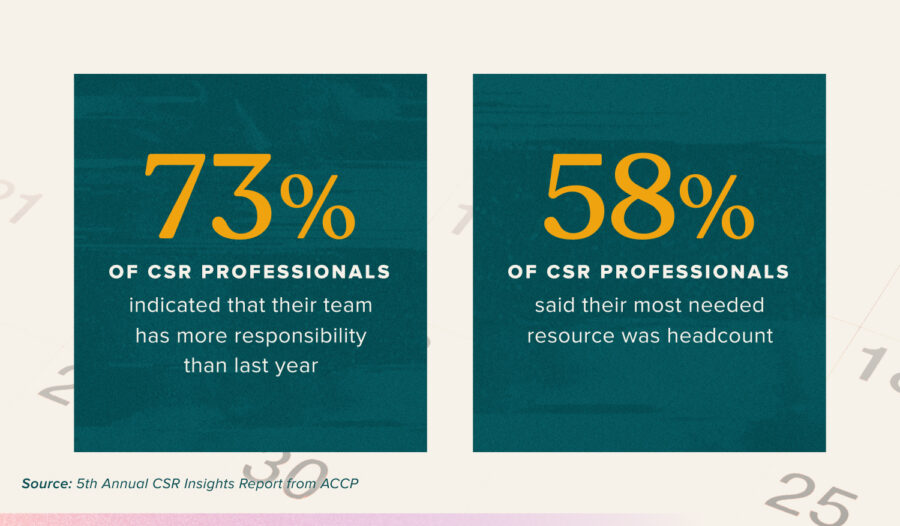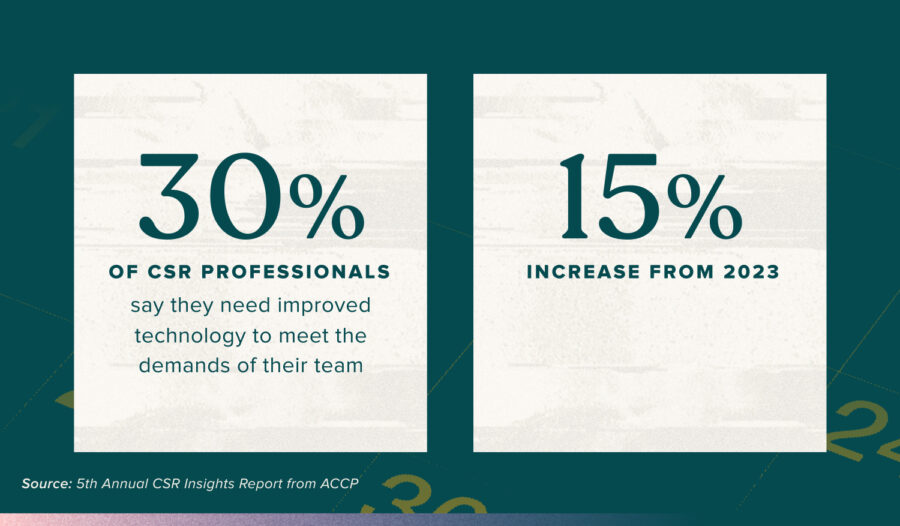Is it really that time of year again? Holidays and big events may come at the same time every year, but they still have a way of sneaking up on you, leaving you scrambling. Don’t let that happen this GivingTuesday. Rushed efforts usually fall short, but there’s good news: with ample time and the right tools, you can run an impactful program without the stress. GivingTuesday is the perfect opportunity to engage your employees in meaningful giving. With a smart strategy, planning impactful workplace-giving programs becomes manageable and rewarding.
Last year, for instance, $3.1 billion was raised across the US as a part of GivingTuesday. That is a lot of excitement in one day, and you can use this energy to boost your workplace giving programs.
But, when we talk to corporate social responsibility (CSR) professionals, for a variety of reasons, they feel they didn’t do enough to capitalize on the most popular day to raise donations. Even a well-intentioned campaign can fall flat. But it doesn’t have to.
Let’s look at why your GivingTuesday campaign might not have met expectations last year and how this year you can knock it out of the park.
Want to get started?
Download our workback calendar to help you check off your to-dos for a successful GivingTuesday.
Why run a GivingTuesday campaign?
While employees can donate through a giving program at any time, building towards a compelling, centerpiece event can help focus people’s attention, participation, and impact. For instance, Jen Carter, Global Head of Technology & Volunteering at Google.org, has said that, although Google employees can use their volunteer time off (VTO) hours at any time of year, they like to focus their efforts on a specific month:
“We do try to galvanize a lot of folks around the specific month [for volunteering activities] just so that people can volunteer with their team and really get a lot of excitement around it.”
Jen Carter, Global Head of Technology & Volunteering at Google.org
The same is true for donations. GivingTuesday, which began as a single day in 2012 to encourage people to do good, has evolved into a global movement that inspires people to celebrate generosity in support of their favorite causes.
Aligning your own employee giving program with this calendar milestone provides a clear connection between your employees and the nonprofits making a difference on the ground in their communities.
There’s a common saying: “Something that can happen anytime often happens not at all.” With a compelling reason to get involved right now, you can kick-start participation in your CSR programs. Even better, you can build momentum and a solid foundation for success and engagement into the future.
Why your GivingTuesday campaign might not have been successful last year
Several key factors can contribute to a GivingTuesday campaign falling short, even if you made a focused effort. These ideas might not be revolutionary–they’re core fundamentals that may be easy to overlook. Let’s take time to fully consider each one.
1. Unclear expectations and communication
Not knowing why you’re fundraising or what your ultimate goal is can prevent you from achieving the results you were expecting. Without set expectations for what the fundraiser will do and how people can contribute, it’s challenging to measure success and motivate participants.
This challenge is far more widespread than just GivingTuesday. Of note, while 71% of employees say they want a culture supportive of giving and volunteering, less than 20% of employees participate, according to America’s Charities and CECP.

This is in part because employees often don’t understand what impact their actions can have within the community. Plus, if your goals aren’t communicated to employees, they may not understand the importance of their participation in the first place, leading to lower engagement.
No matter how much effort you put into a campaign (and we know you put in a lot!), without clearly outlining your goals and effectively communicating them to your company, you won’t drive as much impact as you could.
2. Starting too late
Another major reason that GivingTuesday campaigns fall flat is not starting early enough. You need time to develop a robust engagement strategy for both your C-suite and your colleagues.
While GivingTuesday is just one day, what you do during the weeks and months leading up to it will have a tremendous influence on what will happen in your company on that one day.
Adequate planning and execution time allow you to secure executive buy-in for important things like securing approval for the budget to do donation matching.
This is important because research shows that 84% of employees say they’re more likely to donate if their donation is matched, and 1 in 3 donors indicate they’d give a larger gift if matching is applied to their donation.

Matching employee donations demonstrates that the company genuinely supports these initiatives and is willing to invest in areas that matter to individual employees. This will lead to higher participation and, most importantly, more impact.
Matching donations is only half the battle, though. Friction along the process of donating will potentially negate any gains matching gifts may provide. Put simply, if your giving software is a pain for employees to use, they won’t participate. And, acquiring new software and getting it in place can take some time.
Finally, extra planning time can also help you generate excitement among your peers. Sharing the campaign early and issuing reminders often will help ensure that everyone is aware of the program, understands the goal, and knows how they can directly make an impact. Engagement requires well-thought-out communication strategies and activities that inspire participation.
This early communication can open the opportunity for your employees to do some promotional work for you. Employees can share their favorite nonprofits and causes or share experiences that influence why and where they donate. This grassroots enthusiasm is only possible when you start early.
3. Insufficient tools and partnerships
Not having the right tools or partnerships in place on time for GivingTuesday can lead to a lot of extra work and lower participation.
Let’s start with your experience as an administrator. You’ll need the right teammates to support your efforts, strong and authentic partnerships with NPOs to drive real community impact, the right technology to manage your programs, and access to data to prove your ROI.
According to the 5th Annual CSR Insights report from ACCP, 73% of CSR professionals indicated their team has more responsibility than last year, and 58% said the most needed resource was more headcount.

While the right tools might not directly help you hire more teammates, they can empower your existing team members, both within and outside the CSR department, to become passionate advocates who drive your programs forward.
When it comes to partnerships, many of your coworkers likely already have relationships with nonprofits that you can use to identify new giving opportunities. If you haven’t created space to lean into these connections and drive grassroots enthusiasm, you could be missing out on a big opportunity.
Additionally, without the right technology, simple tasks become complicated annoyances. When you’re unable to manage program fundamentals easily—like tracking engagement, collecting donations, communicating campaign goals across the company, and showcasing overall impact—it becomes hard to make real-time adjustments and effectively demonstrate the campaign’s success.
Finally, let’s turn to the employee experience. Without easy-to-use tools and systems, it becomes difficult for employees to know about and engage with the available programs. They might have to constantly check different systems and ask questions.
This stat says it all: according to Double the Donation, only 8% of donors know their company has a matching program, understand their eligibility, and know how to submit a request. Software that isn’t intuitive for employees to use can really drag your participation rates down.
Beyond all of this is one simple fact: people want agency over how they donate. Not offering multiple options to do so–such as payroll deductions, credit card donations, or through accrued rewards that you may offer–can leave employees feeling disempowered and less likely to get involved.
Let’s set up your campaign for success
With a little planning and just a few changes to the work you’re already doing, you can easily create a cohesive, effective strategy that will help you make a bigger impact. Let’s set your company up to make a huge splash for GivingTuesday this holiday season.
1. Create a timeline
Begin planning now. Establish a timeline that creates time for each campaign phase, from brainstorming and securing buy-in to executing and evaluating the event.
With busy schedules at work, it’s crucial to give yourself enough time to put the work in and give your coworkers the time they need to support you. This way, each part of your campaign gets the attention it needs to be successful.
Get Started Today with our GivingTuesday Workback Schedule
Download our free resource to help you stay on top of your to-do list for a successful GivingTuesday.
2. Define objectives
Set specific, measurable goals for your campaign. Whether it’s a fundraising target, a number of volunteer hours, or a certain level of employee participation, clear goals provide direction and motivation.
Outlining your goals in advance streamlines each step of the process—from requesting a budget and gaining executive support to boosting employee engagement and sharing success stories afterward.
3. Engage stakeholders
Work with your executive team early to secure support and resources. Executive buy-in is critical for legitimizing the campaign and ensuring access to necessary funding and tools. Additionally, when executives participate, employee participation rates typically increase.
4. Make your case for software
CSR professionals are increasingly starting to realize that the right software can make all the difference in a giving campaign.
ACCP’s 5th Annual CSR Insights report, found that 30% of CSR practitioners that responded say they need improved technology to meet the demands of their team. This is a significant 15% increase from 2023.

CSR software should facilitate easy communication with colleagues, simple donation processes, and comprehensive reporting. We wrote a comprehensive guide that will walk you through everything you need to consider when choosing to invest in CSR software. Click here to read it.
The Future of CSR Software: A Buyer’s Guide
Read our guide to get everything you need to make the right choice.
While you know the importance of a modern, innovative, and easy-to-use software, you may need to convince your leadership that investment in a CSR solution will create the ROI you’re looking for.
5. Elevate passionate employees:
Engage employees from the start and elevate the voices of ERG leaders and passionate team members. Involving these leaders in planning and brainstorming sessions helps create a sense of ownership and excitement about the campaign. The more ownership they feel, the more likely they are to participate.
Jaimie Vargas, Head of Social Impact at Electronic Arts, emphasizes that ERGs play a crucial role in shaping how a company’s CSR programs are perceived internally and within communities. Through ERGs, employee voices are amplified, enabling the development of programs that address their needs and interests.
Every Employee Is a Social Impact Agent
Listen to our interview featuring Jaimie Vargas, Head of Social Impact at Electronic Arts, describing how every employees has a place in CSR programs.
Many of your colleagues have existing relationships with NPOs in their communities—give them the opportunity to share these connections and share photos of their participation in events, enhancing the sense of community. This kind of grassroots enthusiasm starts with a user-friendly giving platform that makes it easy for teammates to log in, nominate an NPO, donate, participate in volunteer events, and receive rewards (all of which we built Submittable Give from the ground up to do).
6. Communicate clearly and often
The “Rule of 7,” suggests that people need to see a message about seven times before they engage with it. This principle highlights the importance of regularly communicating goals and expectations to employees and starting early. It often requires repeated reminders before you start seeing active participation in your programs
Use multiple channels—emails, meetings, intranet posts—to ensure everyone is informed and on the same page. This is vital because 85% of employees said they’re most motivated when they receive updates and company news through internal communication channels.
7. Training and support
Make sure your team is well-equipped to use your giving platform by providing training and support. Learning a new system can be challenging, especially with multiple software tools in play. Take the time to show everyone how to log in, find your campaign, ask for help when needed, and share their stories. This will make employees feel more confident in using the software and more likely to participate.
8. Increase visibility
Access and visibility into the campaign’s progress and results will help you understand what’s working and what isn’t. Robust reporting tools help track donations, engagement, and overall impact, providing valuable insights to share with stakeholders and for future planning.
9. Monitor and celebrate progress
Keep a close eye on your campaign’s progress and stay actively engaged at every step leading up to GivingTuesday. Share early successes to recognize those who are already involved—37% of employees say recognition is the most important form of support from their managers.
Celebrating participation not only motivates those who are involved but also encourages others to join in. Regular updates and milestone celebrations will help keep the momentum strong and ensure continued engagement throughout the campaign.
10. Build your GivingTuesday coffers all year long
As you prepare for GivingTuesday, consider additional programs and engagement opportunities that enable employees to contribute more to their communities. We built the Submittable Impact Wallet with this type of ongoing giving in mind.
With the impact wallet, you can reward giving funds to employees when they participate in volunteer events and wellness challenges, celebrate anniversaries, and more. These funds go into their impact wallet they can hold onto throughout the year and then donate on GivingTuesday.
Run a great GivingTuesday campaign by starting today
By thoughtfully planning your campaign and making a few strategic adjustments to your existing work, you can create an impactful and cohesive GivingTuesday strategy.
Setting clear timelines, defining measurable objectives, engaging stakeholders, leveraging the right software, and fostering passionate employee involvement are key steps to ensuring your campaign’s success. Regular communication, training, visibility, and celebrating progress will keep the momentum strong.
With these strategies in place, you’re set to make a significant impact this holiday season and beyond.
With the right CSR software, like Submittable, launching and managing your campaign becomes quick and efficient. Submittable’s comprehensive platform streamlines all your CSR programs, boosting engagement and impact.
Get started with Submittable today and watch your GivingTuesday campaign thrive.